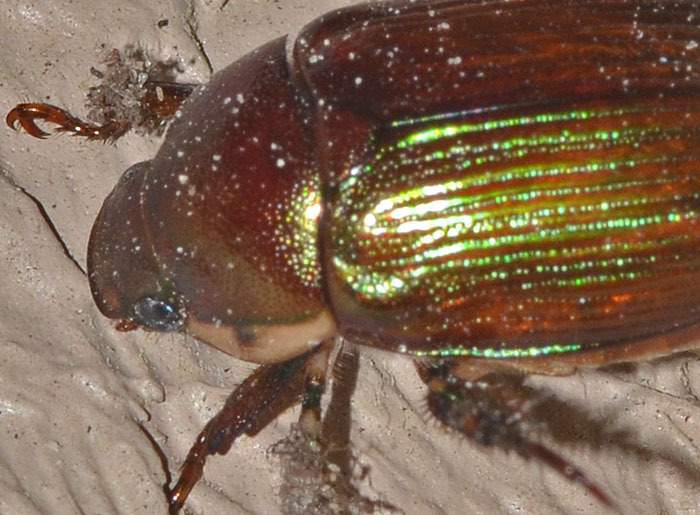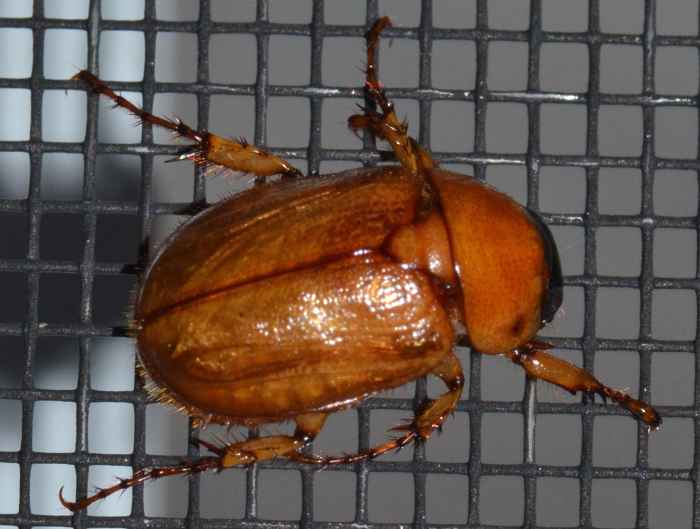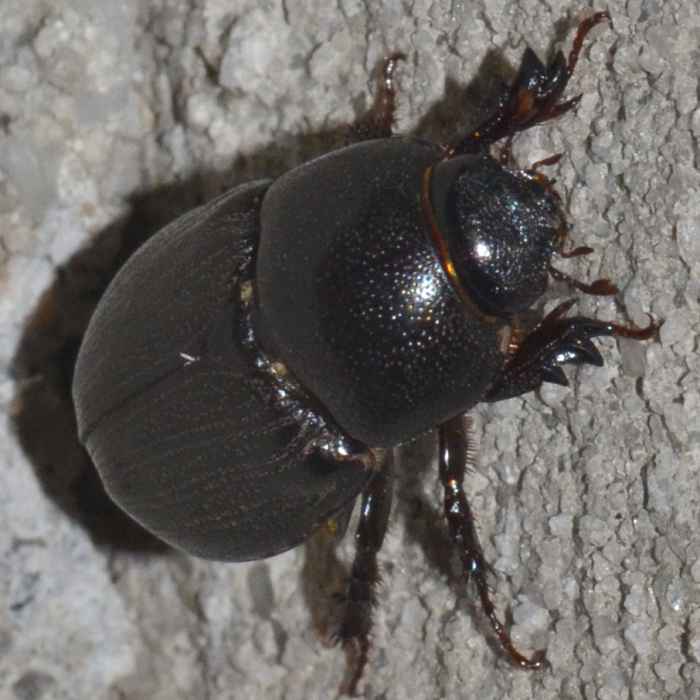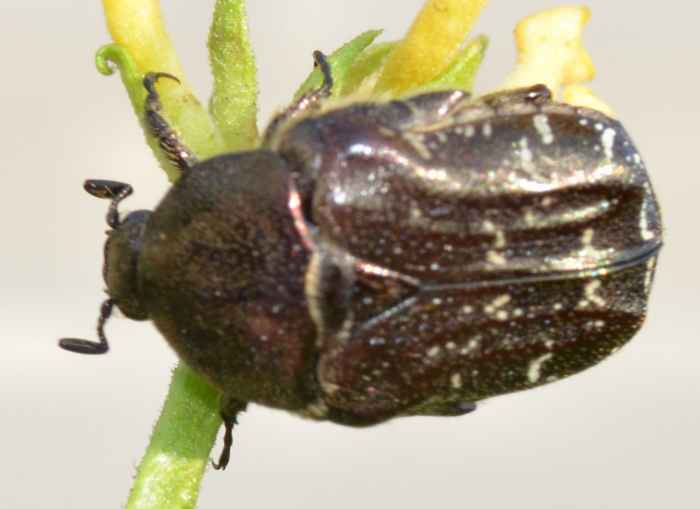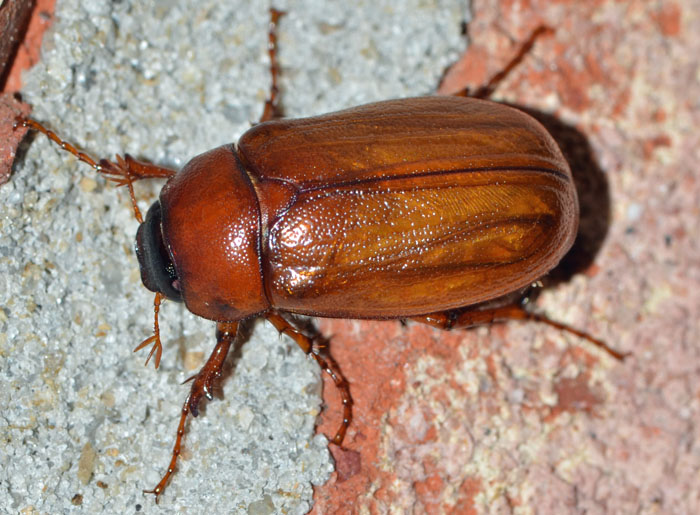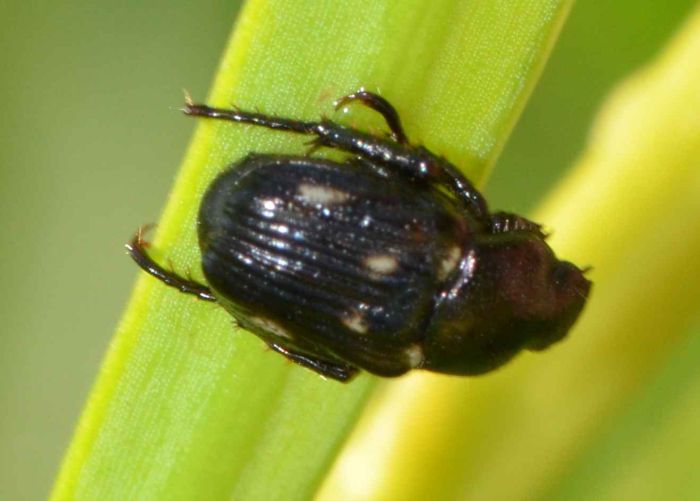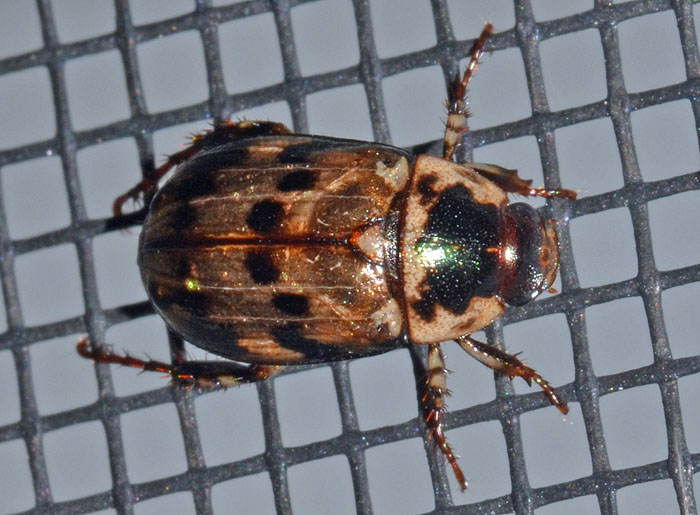 Anomala innuba. | This Shining Leaf Chafers is Anomala innuba. The second reference reports that A. innuba exhibited bimodal flight activity with peak activity from
late April to mid-May and early August to mid-September in Gainesville, Florida. In this large study, A. innuba, A.
marginata, and A. undulata represented 13.5% (n = 5,964) of the total catch (N > 44,000). bug guide (this photo): http://bugguide.net/node/view/690679 E. A. Buss, Florida Entomol. 83, 32 (2006): http://journals.fcla.edu/flaent/article/view/75493/73151 | ||
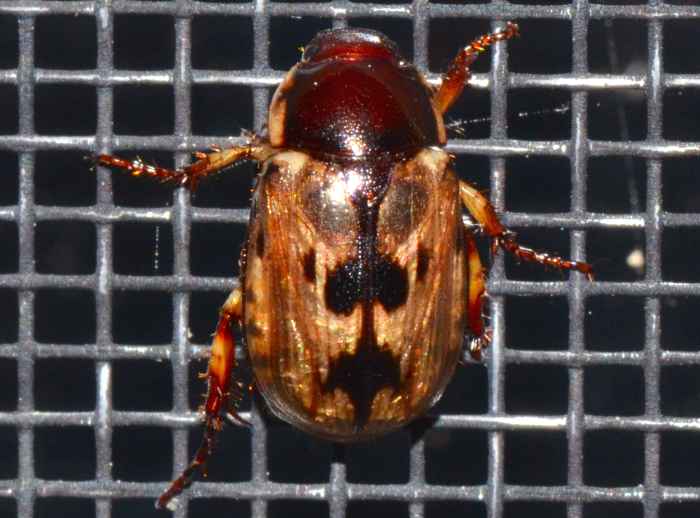 Anomala undulata. | Anomala undulata belongs to the Shining Leaf Chafers. Adults are most often found March through May. bug guide (this photo): http://bugguide.net/node/view/627979 | ||
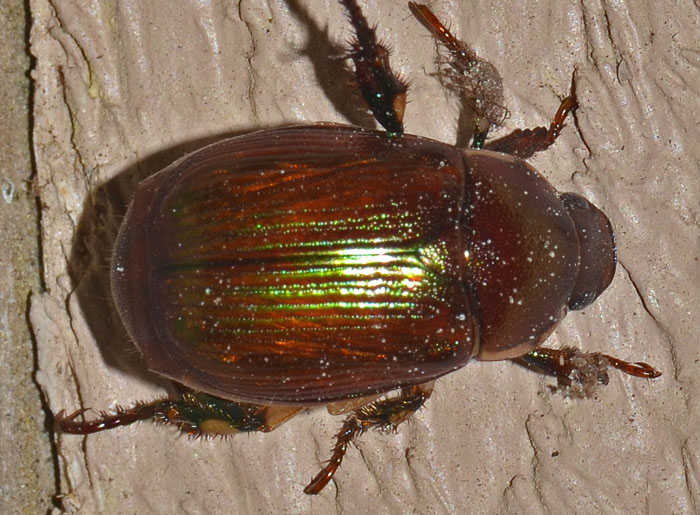 Callistethus marginatus. | Another scarab beetle. This species has a characteristic greenish sheen. The head and the pronotum are darker. Notice the paler sides of the pronotum.
bug guide (this photo): http://bugguide.net/node/view/949311 | ||
 Cyclocephala sp. (Masked Chafer). | This beetle is a Masked Chafer (Cyclocephala sp.) walking on my window screen. The genus has 21 species in North America. Adults are attracted to lights. Larvae (white grubs) are root feeders and many species are considered agricultural pests.
bug guide (these photos): http://bugguide.net/node/view/574654 | ||
 Diplotaxis sp.. | This beetle belongs to the genus Diplotaxis and is possibly D. liberta. There are over 200 other known species in North America and Mexico with the largest number found in the southwestern US and Mexico. Adults are nocturnal and feed on the leaves of various plants.
bug guide (this photo): http://bugguide.net/node/view/628279 | ||
 Euetheola humilis (Sugarcane Beetle). | At some times these beetles are very common in our yard but one notices them mainly during the night whem they "bombard" our living room windows relentlessly. This one is a Sugarcane Beetle (Euetheola humilis). Their propulation numbers go through unpredictable cycles. Outbreaks of this minor pest have been recorded before the Civil War and as recently as 2008. They are persistent and strong diggers.
bug guide (these photos): http://bugguide.net/node/view/573973 Mississippi State U: http://msucares.com/newsletters/pests/bugwise/2009/bw0209.pdf | ||
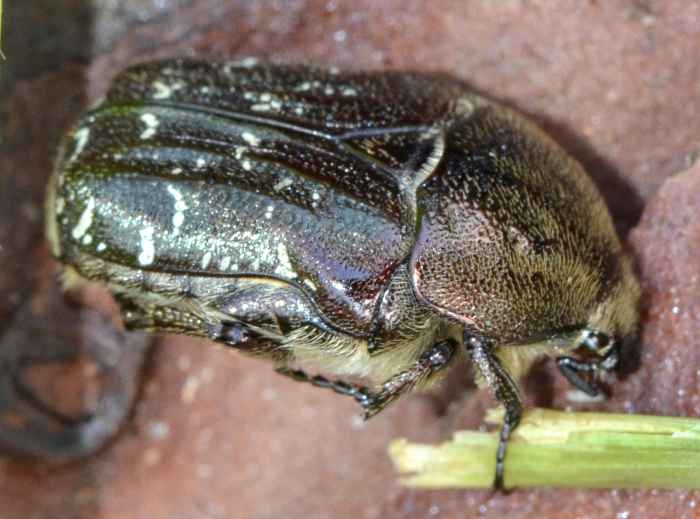 Euphoria sepulcralis sepulcralis (Dark Flower Scarab). | I found this beetle on a lantana flower. After moving the flower around to get a better photo, the beetle fell off and pretended to be dead. It is a Dark Flower Scarab (Euphoria sepulcralis sepulcralis). There are four recognized subspecies. The UF site refers to it as one of the "most frequently submitted" beetles.
bug guide (these photos): http://bugguide.net/node/view/570733 UF: http://entnemdept.ufl.edu/creatures/orn/beetles/Euphoria_sepulcralis.htm | ||
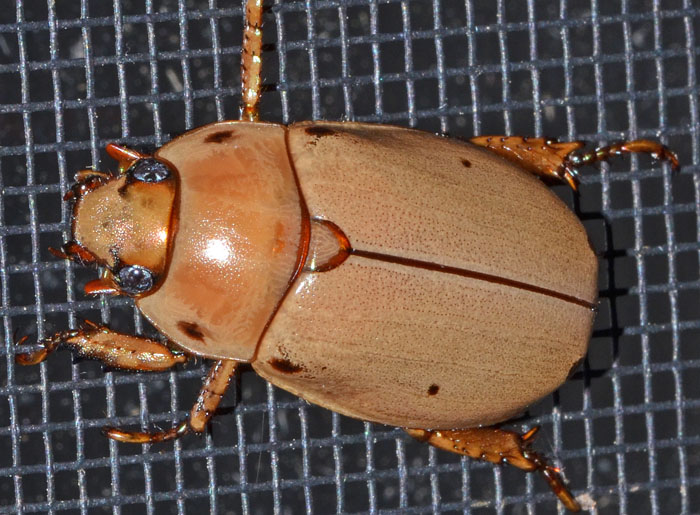 Pelidnota punctata (Grapevine Beetle). | The Grapevine Beetle is a large, golden-yellow scarab. It has peripheral spots on its pronotum and elytra. Apparently, southern specimens have light brown legs, whereas northern specimens have dark legs. Its larvae feed on decaying roots and stumps of trees and pupate in the adjacent soil. Adults come to light.
bug guide (this photo): http://bugguide.net/node/view/1078463 | ||
 Phileurus valgus. | Phileurus belongs to the subfamily of Rhinoceros Beetles and yes, it is fairly big and impressive. In the US, the genus has two species (P. truncatus and P. valgus) which both exist in Florida. bug guide (this photo): http://bugguide.net/node/view/1080819 | ||
 Phyllophaga sp. (May Beetle). | The genus Phyllophaga includes over 400 species in North America. This specimen could possibly belong to P. crenulata. Adults feed on foliage and can cause significant damage if they occur in large numbers. The larvae are the infamous white grubs. They feed on the roots of grasses as well as other plants including vegetables. The grubs live below ground for 3-4 years before becoming adult beetles. The small photos (Aug. 2014, June 2015) show rather different looking specimens.
UF: http://entomology.ifas.ufl.edu/creatures/field/white_grub.htm | ||
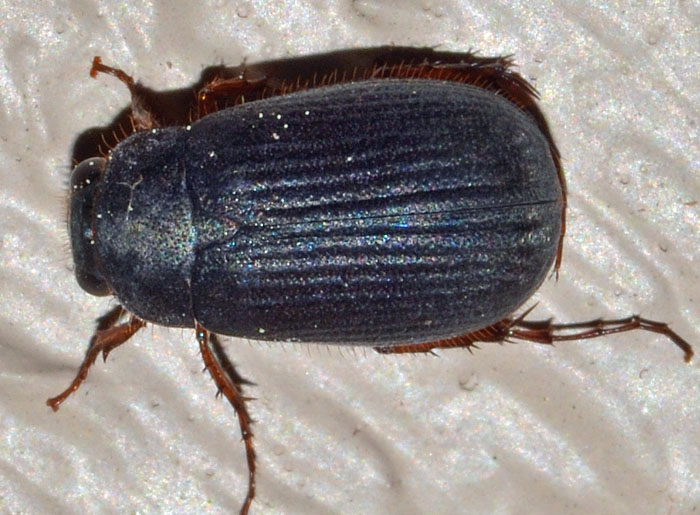 Serica sp.. | This scarab beetle came to our porch lights but was rather inactive. The genus has about 110 species in North America and is widely distributed in the US. The adult beetle eats leaves. bug guide (this photo): http://bugguide.net/node/view/1054354 | ||
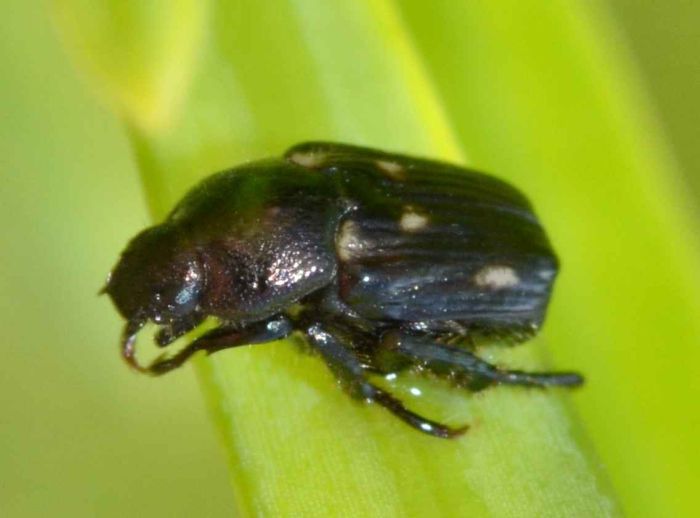 Strigoderma pygmaea (Pygmy Chafer). | Pygmy Chafer: Strigoderma pygmaea. The adult beetles in this subfamily feed on foliage and fruits; larvae on roots and decaying vegetation.
bug guide (this photo): http://bugguide.net/node/view/562400 Joe MacGown's Insect Drawings: http://www2.msstate.edu/~macbug1/Images/scarab%20drawings/Strigoderma.pygmaea.jpg | ||
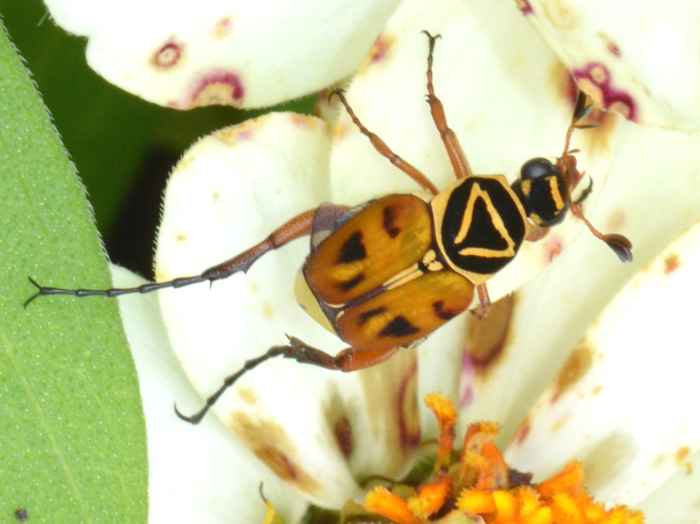 Trigonopeltastes delta (Delta Flower Scarab). | A "D Beetle" ("D" for delta) or more commonly know as Delta Flower Scarab (Trigonopeltastes delta). The characteristic delta-like marking on the pronotum and the orange color of the elytra are possibly a wasp mimicry. bug guide (this photo): http://bugguide.net/node/view/572468 cirrusimage: http://www.cirrusimage.com/beetle_delta_flower_scarab.htm |

